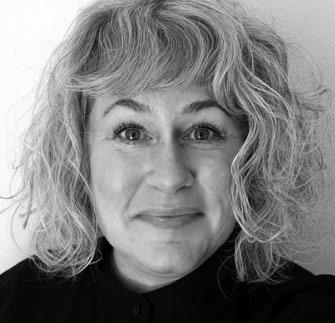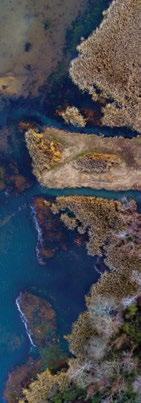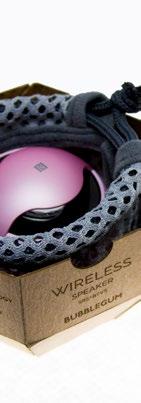ILLINOIS BSSD


























As a land-grant institution, the University of Illinois at UrbanaChampaign has a responsibility to acknowledge the historical context in which it exists. In order to remind ourselves and our community, we will begin this booklet with the following statement:
We are currently on the lands of the Peoria, Kaskaskia, Peankashaw, Wea, Miami, Mascoutin, Odawa, Sauk, Mesquaki, Kickapoo, Potawatomi, Ojibwe, and Chickasaw Nations. It is necessary for us to acknowledge these Native Nations and for us to work with them as we move forward as an institution. Over the next 150 years, we will be a vibrant community inclusive of all our differences, with Native peoples at the core of our efforts.


The major in Sustainable Design offers an innovative, interdisciplinary course of study in design, with a focus on creating sustainable communities. Sustainable design calls on a student's creativity to conceptualize, visualize, analyze, communicate, and build products, buildings, cities, landscapes, and communities that use energy and materials in a more environmentally and socially sustainable manner. You will learn how design can contribute to solving problems of sustainability in a constantly evolving society and building equitable, healthy, and thriving places.
Sustainable design majors complete course work in graphic and industrial design, architecture, landscape architecture, and urban and regional planning. The program combines concrete skills development with opportunities to move between disciplinary barriers and traverse traditional boundaries.

1. Students will have a deep level of understanding of the fundamentals of sustainability and their functional links to the built environment.
2. Students will have a deep level of understanding of the fundamentals of design thinking and practice.
3. Students will be proficient in applying basic principles of visual and material communication, including sketching, drafting, model-making, 2-D and 3-D design software, and geographic information systems.


4. Students will be able to combine design theory and practice with sustainability principles to address environmental issues at the product, building, neighborhood, city, landscape, and global levels.
5. Students will be comfortable working in multidisciplinary teams to solve complex design problems.

• FAA 101 Arts at Illinois | 1 hour


• LA 101 Introduction to Landscape Architecture | 2 hours

• UP 136 Urban Sustainability (Gen Ed: Soc & Behav Sci) | 3 hours
• ARCH 171 Concepts and Theories of Architectural Design | 3 hours
• ARTH 211 Design History Survey (Gen Ed: Humanities & the Arts) | 3 hours
• ARTD 225 Design Drawing | 3 hours
Or ARCH 172 Drawing & Modeling | 3 hours
• FAA 230 Sustainable Design of the Built Environment | 3 hours
• ARTD 326 Sustainability & Manufacturing | 3 hours
• FAA 330 Making Sustainable Design | 5 hours
• ARTD 451 Ethics of a Designer in a Global Economy | 4 hours
• ARCH 273 Strategies of Architectural Design | 3 hours
• ARCH 321 Environment, Architecture, and Global Health | 3 hours
• FAA 430 Capstone Seminar | 3 hours
• FAA 431 Capstone Studio | 5 hours


Please view sample schedules for starting the program as a first-year student, intercollege transfer, or off-campus college transfer at faa.illinois.edu/majors-minors/program



Common Arts experience for FAA freshmen that explores contemporary issues in the arts, cross-disciplinary ingenuity navigating a comprehensive research intensive university, professional practices and exposures to FAA faculty and guest artists through lectures, discussion groups, and online components. This course is waived for intercollege transfer (ICT) and off- campus transfer (OCT) students.
Introduction to primary concepts and methods of landscape inquiry as a means to understand experiential qualities of landscape and to guide landscape design and planning projects.
• Through lectures, readings, and image study, learn about landscape architecture of the immediate past and present.
• Explore the range of influences and expectations shaping landscape architecture theory and practice.
• Study key built and speculative works, competitions, and landscape-based events.

• Become acquainted with landscape designers themselves.
• Develop a foundational understanding through which to respond, both critically and creatively, to existing works and to further developments in the field.
Provides students with a basic understanding of how to make cities more sustainable by connecting how and where we live to environmental issues. Emphasis on green infrastructure and urban systems, vulnerability and resilience, green design and construction methods, energy production and consumption, and water conservation.
• Develop a more critical, multi-scaled perspective about decisions in the built environment.
• Build a vocabulary and the ability to communicate about the built environment, sustainability, and sustainable development.
• Engage in critical self-reflection about where and how they live.
• Become an agent for positive social and environmental change and contribute substantially to local knowledge of sustainability.


This course introduces basic theories of architecture. It creates awareness of design concepts. Course content is arranged in three topical areas: Architecture and People, Architecture and Place, and Making Architecture. Each topical area addresses roles of designers and architects in contemporary and historical perspectives.
• Communicate, graphically and textually, your ability to observe and see the environment surrounding you.
• Document and analyze the details of your surroundings through drawing and writing.
• Analyze and represent your observations of people in environments to others.
• Formulate and convey critique of design action through analysis of evidence you have collected.
• Assess the implications of a design action for equitable use of the environment.
• Develop, communicate, and present your creative ideas, orally, graphically, and textually.
The historical, social, and cultural context of design concentrating on manufactured products, communication, media, and design from the Industrial Revolution to the present. Lectures, seminars, and individual research projects.
• Historical Knowledge and a growing awareness of the history of design in the West. Through reading, writing, and discussion, students will learn about a range of historical and contemporary art and design practices with the goal of understanding how those practices affect culture at large. Students will also learn how to recognize gaps in their own knowledge—and how to fill those gaps through research.
• Expanded sense of what design is and how it affects everyday life and the social world more generally. This course seeks to introduce students to new ways of thinking about design and to challenge assumptions about what design is. By the end of the semester, students should feel comfortable engaging questions such as: What constitutes a designed object or space? Can design include approaches to problem solving? Can design function as an oppositional discourse?
• Critical Looking (art criticism and art history). Students will learn how to look at objects with an eye to making solid, rational interpretations even in the absence of complete information. In this way, students will learn how to approach and analyze artworks and designed objects that might at first appear confusing.



Introduction to rapid drawing methods and tools used by designers. Focuses on theory and application of orthographic and perspective drawing for communication of design ideas.
• Understanding orthographic and perspective drawing systems used by industrial designers.
• Developing drawings that accurately portray shapes
and provide technical information to guide design and manufacturing.
• Creating realistic images of envisioned designs, forms, and materials.
• Learning to make quick, simple design sketches that express 2-D and 3-D objects rapidly, expressively, and professionally.
• Understanding use of basic light, shade, shadow, and color.
• Use of communication mediums common to the professions (felt-tipped markers, colored pencils, and others).
• Developing proficiency in freehand and instrument assisted drawing methods.

• Lettering by hand for communication of technical and related support information.
• Creatively resolving design problems through participation in active learning and the iterative process of discourse and critical analysis as part of design improvement.


Introduction to the architectural graphic communication skills that architects use to visualize, analyze, and record creative thoughts.
• Developing proficiency in freehand drawing methods used by architects.
• Learn architectural delineation techniques for communicating designs to clients and the public.
• Develop designs using digital applications.
This seminar introduces fundamental readings in sustainability and resilient design. Presents diverse perspectives on sustainability and their relation to design, encouraging students to understand and critique different meanings of sustainability over time and geography.
• Understand the history, scope, and meanings of the term “sustainability”
• Gain familiarity with sustainable design practices globally
• Gain exposure to sustainable design discourses through readings, discussions, and guest speakers
• Analyze sustainability of examples of the built environment through analysis, writing, and group discussions
• Synthesize knowledge on a selected topic through a final research paper
Ethics of a Designer in a Global Economy (EDGE) studio presents complex problems of ethics within the graphic design practice. Individual sections address social and environmental issues.


• A discussion of ethics in graphic design
• To activate social change perspectives around systems, sustainability, and design-led social change
• Work on real projects that will have a campus or community impact
• To learn how design can help shape a positive future for people and for the planet
• Learn about current design trends in our social and professional practice
Exploration of environmental origins, theory, and practice of sustainable product design. Environmentally responsive design methodologies and topics such as industrial ecology, dematerialization, design for disassembly, design for recycling, and life-cycle assessment.

• To prepare the design student to integrate environmental and cultural considerations throughout the design process.
• To equip the design student with specific environmentally responsive tools, principles, and methodologies in preparation for professional application.
• To foster teamwork and to encourage self-learning.
• To instill knowledge of sustainable materials and manufacturing.
Introduction to techniques and tools for representing and realizing sustainable design ideas. Using a case study method, students are introduced to digital and analog means of representing concepts, data, and spatial forms across multiple scales. Through hands-on assignments, tutorials, and workshops, students learn the basic skills to express ideas graphically and in three dimensions.
• Gain broad knowledge of sustainable practices in contemporary design.
• Analyze several case studies using written, graphic, and verbal communication methods.
• Learn the advantages and limitations of different design tools and techniques.

• Experiment with hands-on representation, including sketching, drafting, and model-making.
• Utilize multiple types of software, including the Adobe Creative Suite, AutoCAD, GIS, and 3-D modeling programs.
• Create an independent design project synthesizing course concepts and skills.

Focuses on understanding architecture as holistic synthesis of principles, technology, and form. Content is arranged in six areas: Research and Analysis, Typology Analysis, Street Analysis, Block Analysis, Neighborhood Analysis, and Development and Presentation. Students work both on individual assignments and in teams on design projects. Emphasis on combining graphic and modeling skills with analytical skills. Exercises require demonstration of skills and concepts introduced in earlier design and technology courses.

This course surveys current research at the intersection of the built environment, health, and well-being. It emphasizes relationships among people and multiple scales of the environments they inhabit and the health and well-being consequences of these relationships. It comparatively examines these relationships within a broad range of Western and Non-Western cultures and contexts by introducing significant historical and contemporary theories, data of relevance, research processes, and applications in environmental design and planning processes. To improve person-environment fit, the roles of social groups, institutions, and organizations in the personenvironment-health/well-being nexus within various cultural and geographic contexts are examined and compared.
Introduces advanced research themes, methods, and techniques for seniors in Sustainable Design. Emphasis is placed on students developing their own research topics, using multiple representational forms, including writing, drawing, mapping, and modeling.


• Explore multiple design research methods through readings and case studies.
• Articulate a set of research questions based on personal interests.
• Create a sophisticated and comprehensive research proposal that includes research questions, methods, case studies, and an overall position statement.
• Leverage knowledge and skills from previous coursework to make the research proposal more robust.

In design studio format, students work on capstone projects for the Sustainable Design degree. Students receive regular feedback and critique throughout the semester in the form of desk critiques, pinups, and formal reviews with Illinois faculty and guests from other institutions.
• Build upon thesis proposal developed in the capstone seminar
• Develop a sophisticated argument through writing and visuals supporting the thesis statement
• Leverage skills and knowledge from earlier coursework to deepen the thesis argument
• Craft a clear position within the discipline of sustainable design and sustainability studies

• Express a unique voice by synthesizing different research and design methods specific to the thesis subject

• Practice and evolve verbal/visual presentations

Select 16 credit hours, with at least 10 hours at the 300- or 400-level, and with approval of advisor.
ARTD 2 3 0 Design Thinking/Need-Finding 3
ARTD 2 70 Design Methods 2
ARTD 4 26 Product Innovation 3
ART 2 05

3 (Gen Ed: Social & Beh Sci + Cultural Studies: Western)
Experience & Meaning in Design
ART 208 Digital Art and Sustainability 3 (Gen Ed: Humanities & the Arts)
ART 310 Design Thinking 3 (Gen Ed: Humanities & the Arts)
ARTS 3 21 .... Sustainable Fashion Development & Branding
ARCH 2 10 ... Introduction to the History of World Architecture
3
3
ARCH 231 Anatomy of Buildings 4
ARCH 416 The Architecture of the United States, c.1650 to Present 3

ARCH 4 1 7 Modern and Contemporary Global Architecture 3
UP 2 03 ......... Cities: Planning & Urban Life
UP 20 4 ........ Chicago: Planning & Urban Life
3
3
UP 20 5 Ecology & Environmental Sustainability 3 (Gen Ed: Natural Sci & Tech)
UP 246 ........ International Environmental Planning & Governance
3
UP 340 Planning for Healthy Cities 3
UP 405 Watershed Ecology and Planning 4
UP 406 Urban Ecology 4
UP 418 GIS for Planners 4
UP 4 20 ........ Plng for Historic Preservation
UP 4 30
Urban Transportation Planning ......................................................4
UP 4 34 Pedestrian and Bicycle Planning 3
UP 437 Public Transportation Planning 3
UP 456 Sustainable Planning Workshop 4
UP 486 Planning with Climate Change 4
UP 479 ......... Community Engagement in Planning
3
UP 494 Special Topics in Planning 4 (section LB, Public Transportation Planning, or section SK Food Systems Planning)
LA 212 Water and Society 3 (Gen Ed: Humanities & the Arts + Cultural Studies- West)
LA 222 Islamic Gardens & Architecture 3 (Gen Ed: Humanities & the Arts + Cultural Studies- Non-West)
LA 314 History of World Landscapes 4 (Gen Ed: Adv. Comp. + Humanities & the Arts + Cultural Studies- West)
LA 370 Environmental Sustainability 3
LA 446 Sustainable Planning Seminar 4
LA 466 Energy, Plng & Blt Environment 4
LA 480 Sustainable Design Principles 2
FAA International Programs can assist you in planning for a semester or summer abroad. The programs below are a few examples of options which feature relevant coursework to the sustainable design major. View all recommended programs for sustainable design majors here or browse all study abroad programs offered by the University of Illinois here .
Swedish University of Agricultural Sciences in Sweden in Uppsala, Sweden (semester abroad): landscape architecture, sustainability, Swedish innovation, "science and education for sustainable life"
University of Sheffield in Sheffield, England (semester abroad): landscape architecture, urban studies, and planning
National University of Singapore in Singapore (semester abroad): design and the environment
DIS Copenhagen in Copenhagen, Denmark (summer or semester abroad): sustainable development, environmental impact and policy, Danish design, and innovation through design thinking
Lorenzo de Medici in Florence, Italy (semester or summer abroad): built environment, sustainable architecture, public space design, design ethics, studio art.


Shibaura Institute of Technology in Tokyo, Japan (semester abroad): industrial design, environmental engineering, land use planning, architectural & creative design.
Communicating with your advisor as early as possible is important for planning your course requirements to include a semester abroad. Summer programs and short-term trips are also available.



You are strongly encouraged to discuss class assignments with others, but your work in papers and exams must be your own. Do not quote directly or paraphrase from published works (including the world wide web) without a proper citation. Footnote ideas and information that are not common knowledge. When in doubt about what academic integrity requires, ASK! Failure to abide by the principles of academic honesty will result in a failing grade for the course. See the student handbook, studentcode.illinois.edu/article1/part4/1-401/ , which is incorporated into the program.
The BSSD learning environment includes dialogue, collaborative work, and service-learning. By enrolling in a course in the BSSD, students agree to be responsible for maintaining a respectful environment in their academic and professional training. The expectations outlined in this code apply to all people participating in BSSD activities, including classes, projects, and extracurricular programs.
Rights in the BSSD learning environment. All participants in BSSD activities have the right to feel comfortable sharing in the conversation, to be free of intimidation or ridicule, and to face no discrimination on the basis of their views. Through classroom discussions, opinions are questioned and challenged and may be strengthened or revised. In group project work, students have

the right to be included, to contribute, and to have their voices heard by team members. Group projects prepare students for working with a wide variety of colleagues and allow for the opportunity to learn from classmates.

Responsibilities in the BSSD learning environment. Students, faculty, and staff are responsible for maintaining an inclusive, respectful environment and all are expected to respect the opinions and backgrounds of others. In order to have successful dialogue, basic rules of courtesy should be followed. Students and faculty are also responsible for dialogue that meets the standards of academic and professional settings, where opinions are valid when they are supported with appropriate evidence and logical arguments. Students and faculty may speak from personal experience but should not make arguments based on uninformed stereotypes, misrepresented information, or unsupported assertions. In group work, participants are responsible for providing the opportunity for each group member to contribute. Ideas and contributions should be valued and considered equally as long as they meet the basis of accepted academic and professional standards for design work.
If you are having troubles in the course or in your life more generally, please use the resources available on campus. The FAA Senior Assistant Dean for Undergraduate Academic Affairs–Student Affairs is Zelda Gardner who can be reached at 217.333.9198 or zgardner@ illinois.edu . The Student Assistance Center can be reached at 217.333.0050. The Counseling Center is committed to providing a range of services intended to help students develop improved coping skills in order to address emotional, interpersonal, and academic concerns. The Counseling Center provides individual, couples, and group counseling. All of these services are paid for through the health services fee. The Counseling Center offers primarily short-term counseling, but they do also provide referrals to the community when students could benefit from longer term services. counselingcenter.illinois.edu










Associate Professor, School of Art and Design


Eric Benson is an associate professor of Graphic Design in the School of Art and Design. He worked professionally as a UI/UX designer at Razorfish and Texas Instruments before he received his MFA in design from the University of Texas at Austin in 2006. His MFA thesis became the internationally recognized and award-winning sustainable design website Re-nourish. He created the Fresh Press Agri-Fiber Paper Lab. Fresh Press explores the potential of papermaking to be zero waste, environmentally sustainable, and a catalyst for a thriving local economy. Benson has published and lectured internationally on the importance of sustainable design. His work has also garnered numerous design awards and has been seen in notable venues like the Walker Art Center, the Hammer Museum, the Contemporary Arts Museum Houston, RISD, and Cooper Hewitt, Smithsonian Design Museum. He is also an active participant in the national design scene and local Champaign community serving on the American Institute of Graphic Arts Design Educators Community and on the board of directors at 40North and Common Ground Food Co-op. Eric recently helped launch a new project for climate designers.
Assistant Professor, School of Architecture and Department of Landscape Architecture
Aneesha Dharwadker is an assistant professor of architecture and landscape architecture at the University of Illinois at Urbana-Champaign. Her teaching and scholarship examine globalization, colonialism, and social issues in relation to the built environment. She is the founder of Chicago Design Office and editor of Transect , a journal of design criticism.

Teaching Assistant Professor, Urban and Regional Planning
Dr. Fang researches urban forests, land use, and environmental planning. She uses geographic information systems, remote sensing, machine learning, and spatial modeling to understand urban tree canopy and greenspace toward environmental justice. She examines urban tree species distribution using high spatial resolution images, as well as object-based image analysis to describe urban tree health. She has taught courses in physical geography, GIS, making sustainable design studio, urban informatics, and data science for planners. Dr. Fang received her Ph.D. in Geography from West Virginia University in 2019. She earned her master’s in Environmental Engineering from Ulsan National Institute of Science and Technology and a bachelor’s in Urban and Regional Planning and Resource Management from Beijing Forestry University.

Teaching Assistant Professor, School of Art and Design
Karin Hodgin Jones is the program coordinator for the Bachelor of Science in Sustainable Design program. She received her MFA in studio art in 2008 and her Master of Urban Planning degree in 2016, both from the University of Illinois at Urbana-Champaign. She holds a BFA in intermedia art with sculpture and film emphases from the University of Utah (2004). She teaches in the Sustainable Design program and the Studio Art program in the School of Art and Design. Her teaching covers object life-cycle assessments and data visualization strategies, critical engagement with historical and contemporary sustainability practices, and sustainable digital art and sculptural practices. In her planning work, she develops evaluative strategies for effective collection and management of electronic devices and electronic waste. She lectures and advises on best practices for developing sustainable institutional electronics and e-waste management policies in museums, libraries, and archives.

Assistant Professor, Department of Landscape Architecture

Conor O'Shea is an assistant professor in the Department of Landscape Architecture. His design, research, and teaching focus on the urbanization of the hinterland, operational landscapes, logistics landscapes, and the geography of freight transportation in North America. He directs the Landscape Strategies Laboratory at the University of Illinois at Urbana-Champaign and is founding principal of Hinterlands Urbanism and Landscape.
Emeritus Professor, Department of Urban and Regional Planning
Daniel Schneider is a professor in the Department of Urban and Regional Planning and faculty program coordinator for the Bachelor of Science in Sustainable Design. He is an ecologist and environmental historian whose research focuses on the interrelations between natural and human systems in sustainable planning and management. He has recently completed a book on the history of the biological sewage treatment plant that examines the interrelations between the "natural" and "artificial" in this critical infrastructure. He is currently working on an interdisciplinary project on the ecology and management of bed bugs in U.S. cities, examining bed bug infestations as an issue of environmental justice. His teaching covers ecological applications to planning, watershed planning, urban ecology, and environmental history. He is also a furniture designer and maker, focusing on using locally and sustainably grown hardwoods.


Assistant Dean of Academic Programs and International Education, College of FIne and Applied Arts
Nicole Turner is assistant dean of academic programs and international education for the College of Fine and Applied Arts and supports the administration of the Sustainable Design Program. She received her PhD in higher education from the University of Illinois, an MEd in counseling and career development from Colorado State University, and a BA in psychology with an environmental sciences minor from Northern Illinois University. As an undergraduate she studied abroad at the Mediterranean Center for Arts and Sciences in Sicily, Italy, where she focused on Mediterranean ecosystems. Nicole supports sustainability initiatives in her daily life and enjoys learning about the incredible design projects our faculty have led.

Architecture
• Christina Bollo —green affordable housing and equity
• Mohamed Boubekri —indoor environments, health, sustainable architecture
• Aaron Paul Brakke —regenerative ecological design
• Benjamin Bross —urbanism and material culture
• Sara Bartumeus —architecture and landscape architecture
• Lynn Dearborn —health and equity
• Sara Bartumeus Ferré —architecture and landscape architecture

• Ralph Hammann —energy and architectural design
• Kevin Hinders —urbanism
• Tait Johnson —history of architecture and materiality

• Paul Hardin Kapp —historic preservation
• Sudarshan Krishnan —lightweight and transformable structures
• John Stallmeyer —history and theory of architecture
• Mark Taylor —solar design and renewable materials
• Teri Weissman —history of design
• Billie Theide —sustainable materials, metals
• Molly Briggs —design theory
• Karin Hodgin Jones —digital art and sustainability
• Deana McDonagh —empathic design
• Chiara Vincenzi —sustainable fashion design
• Jennifer Monson —urban ecologies and movement
• Brian Deal —sustainable planning and design, modeling, climate
David L. Hays —landscape theory and history


• Kelley Lemon —PLA, LEED AP, EDAC, vernacular design
Mary Pat McGuire —water and sustainable landscapes
Pollyanna Rhee —modern environmentalism
William Sullivan —landscapes and health
Stephen Sears —landscape design
• D. Fairchild Ruggles —landscape history
• Michael Silvers —traditional ecological knowledge, materials Theatre
• Kim Curtis —sustainable theatre and costume design

• Arnab Chakraborty —land use and environmental planning
Lindsay Braun —sustainable transportation
• Bumsoo Lee —land use and transportation
• Fang Fang —geographic information systems and urban forest
• Alice Novak —historic preservation
• Lou Turner —community organizing
Magdalena Novoa —historic preservation
• Dustin Allred —urban sustainability

Master of Urban Planning in Urban Planning (BSSD/MUP 4 + 1)

The five-year joint BSSD/MUP 4 + 1 program combines a B.S. in Sustainable Design with a M.U.P. in Urban Planning. Current University of Illinois at Urbana-Champaign undergraduate students enrolled in the Sustainable Design undergraduate major who have completed between 60 and 96 credit hours and maintain superior academic performance are eligible to apply for this program. Students admitted to the program will receive the B.S. degree after four years and the M.U.P. degree after one additional year.
Students interested in the BSSD/MUP 4 + 1 program will need to plan their schedules well in advance of their Junior year to ensure they have taken the appropriate course work. By judicious selection of general education courses and major electives in their sophomore and junior years, students will be prepared to apply to the 4+1 program in their junior year.
The professionally accredited M.U.P. program prepares students for careers in planning practice. Such careers involve public service at all levels of government, in private consulting practice, in the nonprofit sector, and in a wide variety of organizations in need of planning services.




Master of Art & Design, concentration in Design for Responsible Innovation (BSSD/MFA DRI 4 + 2)






The B.S.-M.F.A. program combines a B.S. in Sustainable Design with a M.F.A. in Art & Design, concentration in Design for Responsible Innovation (4 + 2 program). Current University of Illinois at UrbanaChampaign undergraduate students enrolled in the Sustainable Design undergraduate major who have completed between 60 and 96 credit hours and maintain superior academic performance are eligible to apply for this program. Students admitted to the program will receive the B.S. degree after four years and, contingent upon successful admittance to the Graduate School, will receive the M.F.A. degree after two additional years.
The MFA in Design for Responsible Innovation focuses on interdisciplinary making for research and practice. This program prepares students to contribute to the field of design by entering into practice, academia, or both. Students can explore responsible futures through research in traditional print media and emergent technologies including, but not limited to, data visualization, digital interaction, information design, systems thinking, and visual narrative.



